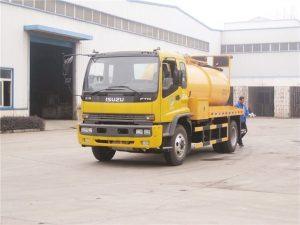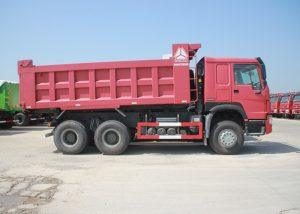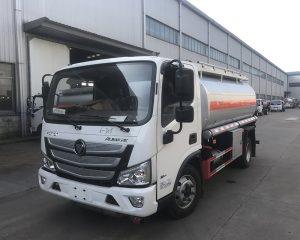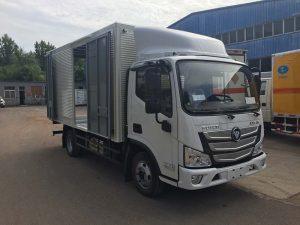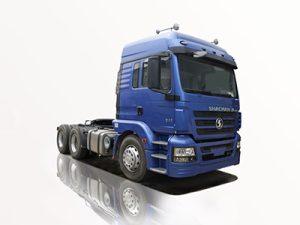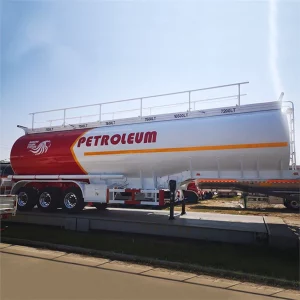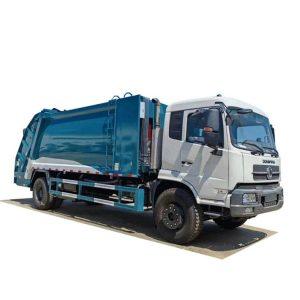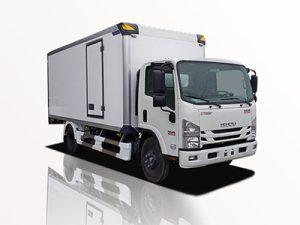Monday to Saturday - 8:00 -17:30
What is a Tanker Truck? An In-Depth Guide
Tanker trucks play a substantial role in transporting liquids and gases, facilitating essential supply chains in various industries. From petroleum to food products, these vehicles are fundamental to modern commerce. In this comprehensive guide, we will explore the intricacies of tanker trucks, including their types, components, safety regulations, and environmental considerations.
1. Understanding Tanker Trucks
Tanker trucks are specialized vehicles designed for transporting liquid cargo. They come in various sizes and shapes, tailored to the specific materials they carry. The key components of these trucks allow them to operate safely and effectively on the road.
1.1 Definition and Purpose
A tanker truck is a vehicle equipped with a tank for carrying liquids or gases. These trucks are essential for industries such as oil and gas, chemicals, and food processing, enabling efficient transportation over long and short distances.
1.2 Evolution of Tanker Trucks
The design and functionality of tanker trucks have evolved over time. Early models were simple and primarily used for water transportation. Today, modern tanker trucks are engineered with advanced materials, safety features, and technology to handle various substances safely.
2. Types of Tanker Trucks
Understanding the different types of tanker trucks is crucial for comprehending their applications in various industries.
2.1 Fuel Tankers
Fuel tankers are designed to transport petroleum products, such as gasoline and diesel. They often feature multiple compartments to carry different types of fuel simultaneously.
Example
A common type of fuel tanker is the “Bobtail,” which is a one-truck unit designed specifically for delivering fuel directly to gas stations.
2.2 Chemical Tankers
Chemical tankers are utilized for transporting hazardous materials. They are often constructed with specialized materials to prevent chemical reactions and ensure safety.
Example
These tankers can transport acids, solvents, and other hazardous chemicals, often featuring multiple compartments for different chemicals.
2.3 Food Tankers
Food tankers transport liquid food products such as milk, juice, and oils. They are constructed with food-grade materials to ensure compliance with health regulations.
Example
A milk tanker typically transports raw milk from dairy farms to processing plants, maintaining strict temperature controls.
2.4 Water Tankers
Water tankers are designed to transport large quantities of water, often used for municipal water supply or firefighting purposes.
Example
Fire trucks equipped with water tanks are essential for firefighting operations in urban areas.
3. Key Components of Tanker Trucks
Understanding the components of a tanker truck helps to appreciate its design and functionality.
3.1 The Tank
The heart of the tanker truck is its tank, typically made from steel or aluminum. The tank’s shape and size depend on the cargo it carries, and it often features insulation to maintain temperature.
3.2 Pumping Systems
Most tanker trucks are equipped with pumping systems that can load and unload liquid cargo efficiently. Depending on the type of tanker, these systems may vary significantly.
3.3 Valves and Hoses
Valves control the flow of liquid during loading and unloading processes, while hoses facilitate transport by connecting the tank to other systems.
3.4 Safety Features
Modern tanker trucks come equipped with several safety features, including rollover protection, spill containment systems, and emergency shut-off valves.
4. Safety Protocols for Tanker Truck Operations
Safety is paramount in tanker truck operations due to the hazardous materials often transported.
4.1 Driver Training
Drivers of tanker trucks must undergo specialized training to handle the unique challenges associated with transporting liquids, including maneuvering and braking.
4.2 Federal Regulations
In many countries, including the United States, numerous regulations govern tanker truck operations. The Federal Motor Carrier Safety Administration (FMCSA) sets standards for safety, driver qualifications, and vehicle inspections.
4.3 Emergency Protocols
Trucking companies must have emergency response plans for spills or accidents. This includes training staff on how to manage hazardous material spills and communicate with emergency services.
5. Environmental Considerations
Tanker truck operations have significant environmental implications, particularly concerning oil and chemical spills.
5.1 Spill Prevention Measures
Modern tanker trucks are designed with features to minimize the risk of spills, including double-walled tanks and built-in spill containment systems.
5.2 Regulatory Compliance
Companies must comply with environmental regulations at local, state, and federal levels. This includes regular inspections and adherence to safety protocols to protect the environment from contamination.
5.3 Sustainable Practices
Many companies are adopting green practices, such as using alternative fuels and optimizing routes to reduce fuel consumption and emissions.
6. The Future of Tanker Trucks
The tanker truck industry is transitioning towards more advanced technologies and sustainable practices.
6.1 Technological Innovations
Advancements in GPS tracking, telematics, and automation are enhancing the efficiency of tanker operations, leading to improved safety and reduced costs.
6.2 Electric Tanker Trucks
As the transportation sector shifts towards electrification, electric tanker trucks are emerging as a sustainable option, reducing carbon footprints associated with traditional fuel sources.
7. Practical Tips for Operating Tanker Trucks
For operators and drivers, here are some practical tips for ensuring efficiency and safety in tanker truck operations.
7.1 Pre-Trip Inspections
Before starting a journey, conduct thorough pre-trip inspections to ensure that the truck is functioning correctly and safely. This includes checking the brakes, lights, and tank integrity.
7.2 Maintaining Optimal Speed
Driving at appropriate speeds is crucial for maintaining control, especially when fully loaded. Avoid sudden movements to prevent spills or accidents.
7.3 Fuel Efficiency Practices
Implement techniques to improve fuel efficiency, such as maintaining proper tire pressure, reducing unnecessary idling, and optimizing routes.
8. Frequently Asked Questions (FAQs)
8.1 What is the capacity of a typical tanker truck?
The capacity of a tanker truck varies, but most can hold between 5,000 to 11,000 gallons of liquid, depending on the type and design.
8.2 How do tanker truck drivers get trained?
Tanker truck drivers typically require specialized training, including obtaining a Commercial Driver’s License (CDL) with a tanker endorsement. Training programs often include safety protocols and hands-on experience.
8.3 Are there different regulations for transporting hazardous materials?
Yes, transporting hazardous materials requires compliance with additional federal and state regulations to ensure safety and minimize environmental risks.
8.4 What should I do in case of a spill?
If a spill occurs, immediately initiate emergency protocols, which include notifying authorities and following safety measures to mitigate the spill.
8.5 Can tanker trucks be used for non-liquid cargo?
No, tanker trucks are specifically designed for liquid and gaseous materials. For non-liquid cargo, flatbed or box trucks are used instead.
8.6 What advancements are being made in tanker truck technology?
Advancements include GPS tracking technologies, automation for loading and unloading, electric-powered trucks, and improved safety features to prevent accidents and spills.


